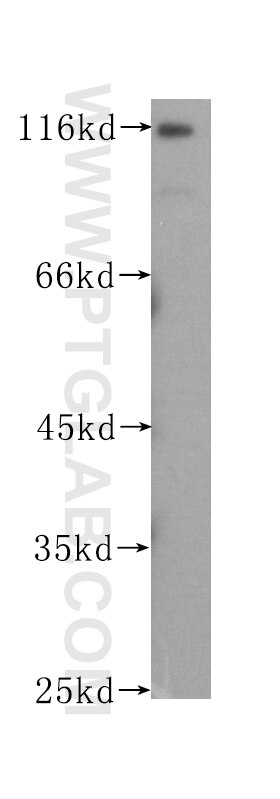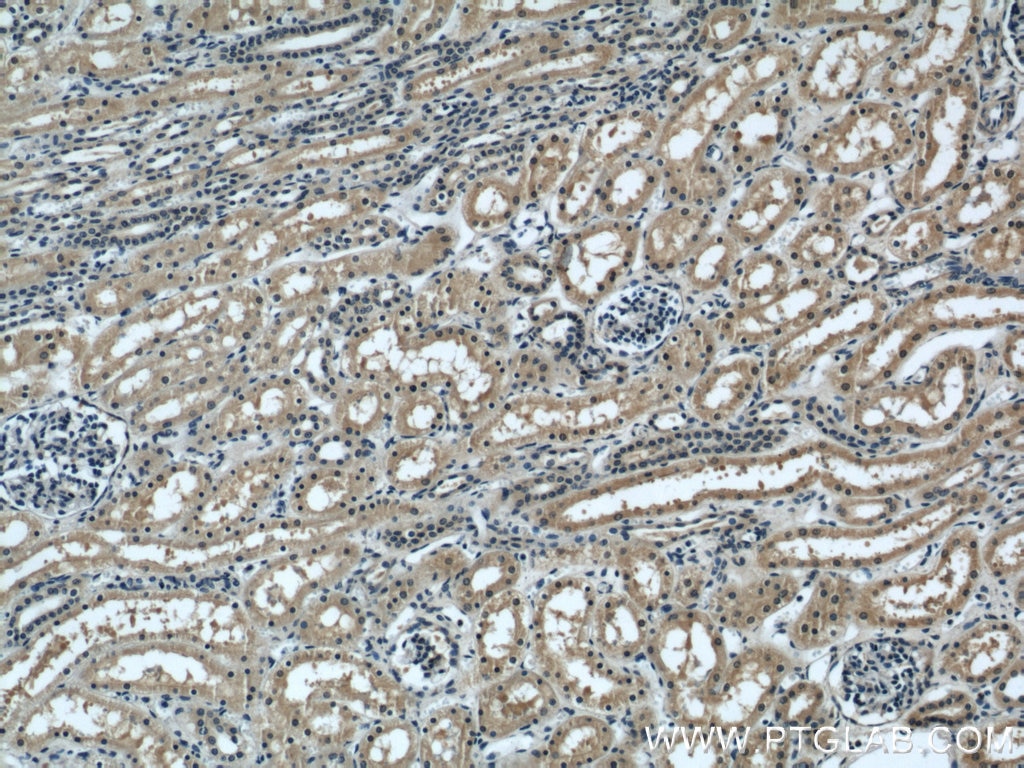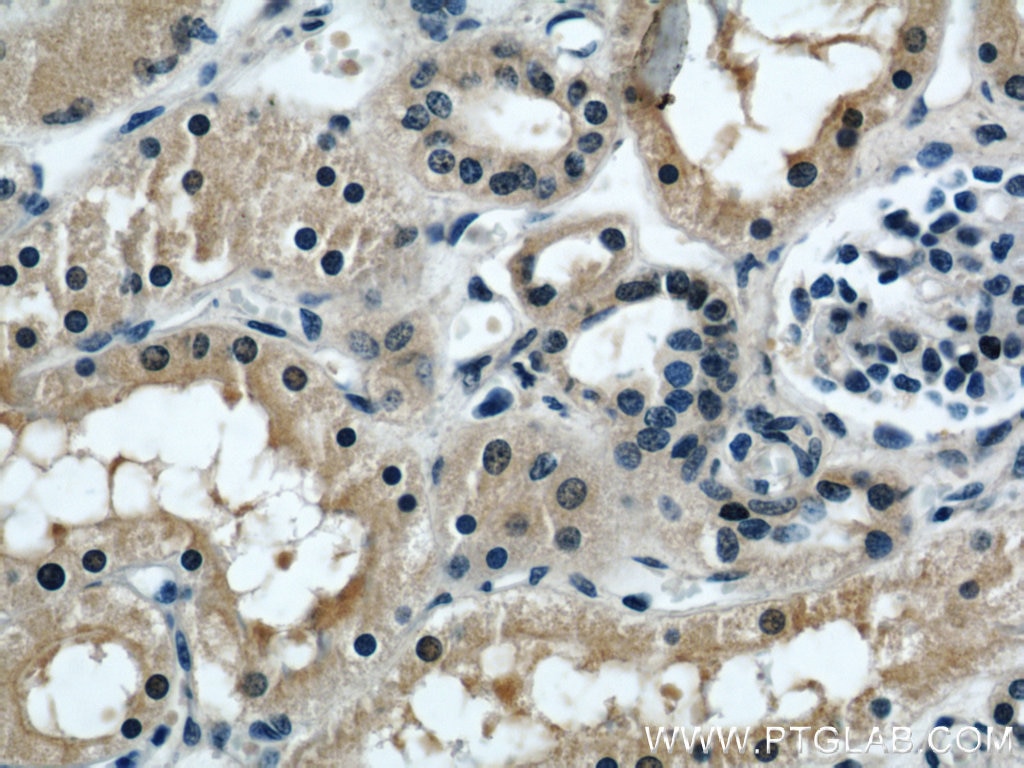Anticorps Monoclonal anti-UBE3A
UBE3A Monoclonal Antibody for WB, IHC, ELISA
Hôte / Isotype
Mouse / IgG1
Réactivité testée
Humain, souris
Applications
WB, IHC, ELISA
Conjugaison
Non conjugué
CloneNo.
3D6H9
N° de cat : 60038-1-Ig
Synonymes
Galerie de données de validation
Applications testées
| Résultats positifs en WB | cellules HeLa |
| Résultats positifs en IHC | tissu rénal humain il est suggéré de démasquer l'antigène avec un tampon de TE buffer pH 9.0; (*) À défaut, 'le démasquage de l'antigène peut être 'effectué avec un tampon citrate pH 6,0. |
Dilution recommandée
| Application | Dilution |
|---|---|
| Western Blot (WB) | WB : 1:200-1:1000 |
| Immunohistochimie (IHC) | IHC : 1:20-1:400 |
| It is recommended that this reagent should be titrated in each testing system to obtain optimal results. | |
| Sample-dependent, check data in validation data gallery | |
Informations sur le produit
60038-1-Ig cible UBE3A dans les applications de WB, IHC, ELISA et montre une réactivité avec des échantillons Humain, souris
| Réactivité | Humain, souris |
| Hôte / Isotype | Mouse / IgG1 |
| Clonalité | Monoclonal |
| Type | Anticorps |
| Immunogène | UBE3A Protéine recombinante Ag0346 |
| Nom complet | ubiquitin protein ligase E3A |
| Masse moléculaire calculée | 852 aa, 98 kDa |
| Poids moléculaire observé | 100 kDa |
| Numéro d’acquisition GenBank | BC002582 |
| Symbole du gène | UBE3A |
| Identification du gène (NCBI) | 7337 |
| Conjugaison | Non conjugué |
| Forme | Liquide |
| Méthode de purification | Purification par protéine G |
| Tampon de stockage | PBS with 0.02% sodium azide and 50% glycerol |
| Conditions de stockage | Stocker à -20°C. Stable pendant un an après l'expédition. L'aliquotage n'est pas nécessaire pour le stockage à -20oC Les 20ul contiennent 0,1% de BSA. |
Informations générales
UBE3A(Ubiquitin-protein ligase E3A) is also named as E6AP, EPVE6AP, HPVE6A and belongs to the E3 ubiquitin protein ligase family. It functions as both an E3 ligase in the ubiquitin proteasome pathway and as a transcriptional coactivator. It is also initially identified as a cellular protein that mediates in vitro association of the human papillomavirus E6 protein with p53, leading to the ubiquitin-dependent degradation of p53(PMID:1661671). Defects in UBE3A are a cause of Angelman syndrome (AS)(PMID:10508479 ). It has 3 isoforms produced by alternative splicing.




